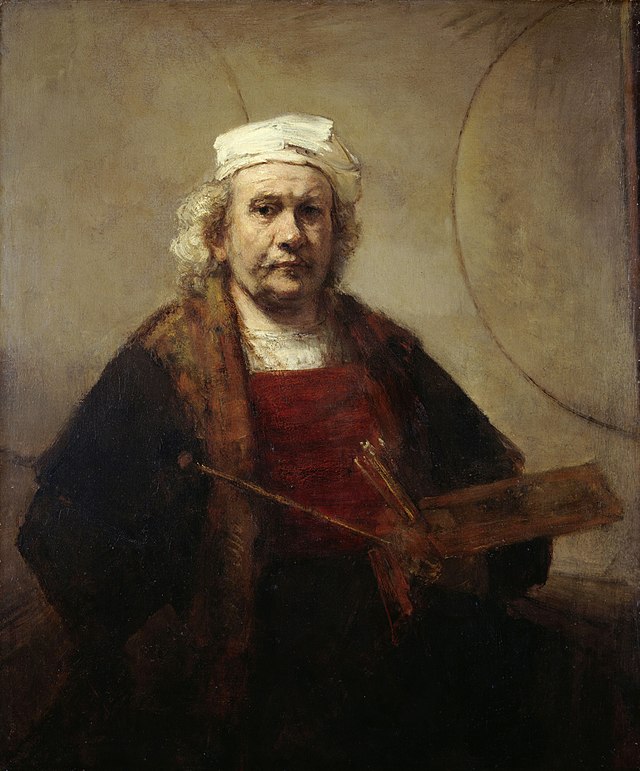Three Cornelias: Navigating Loss With the Bible & RembrandtSample

Self-Portrait with Two Circles (c. 1665–1669)

"Rembrandt" Harmenszoon van Rijn was born on July 15, 1606, in Leiden, in what was then the Dutch Republic. Rembrandt has regularly been regarded as one of the greatest visual artists in history who influenced countless artists in the centuries since he last took brush to canvas. But in one of his final works, Self-Portrait with Two Circles (c.1669), we do not see a man posing for legacy. We see a face marked by sorrow and candor. His expression is steady, weary, and unapologetically human. There is no pretense. No performance. Just presence. And in that rawness, there is something almost sacred. As we look into the eyes of Rembrandt, we see a man who tasted wealth, lived extravagantly, and still knew deep abiding sorrow and loss.
Perhaps you started this devotional today because you are navigating a loss of your own, the loss of a loved one, a spouse, a parent, a future, or maybe the loss of your marriage. I finished reading a biography of Rembrandt the day before my wife and I experienced our third miscarriage. In the weeks that followed, we felt loss even more acutely in a variety of ways in our church family, which made me grateful for the new friend I had in Rembrandt, a man who knew loss intimately. By age 32, Rembrandt had buried three of his children, and at 36, only a year after the birth of his surviving son Titus, he buried his wife, Saskia. This is a man who knew despair.
Like the psalmist, Rembrandt could have said, “My soul is cast down within me.” (Psalm 42:6, ESV). But please note, Rembrandt's is not the blueprint of a virtuous life. This is not a "things all work out in the end" story. After Saskia’s death, Rembrandt entered a complicated and scandalous relationship with a woman he never intended to marry, whom he later had institutionalized to avoid paying alimony. Financial ruin followed. He declared bankruptcy, was blacklisted, and prohibited from selling work under his own name.
In 1669, Rembrandt died in obscurity, buried in an unmarked grave. And yet, the sorrow in Rembrandt’s life is not the final word. Especially in his late self-portraits, we glimpse a longing for something beyond the grief and disgrace—a thirst that mirrors the cry of Psalm 42:
As a deer pants for flowing streams, so pants my soul for you, O God." (ESV)
His paintings, especially in his later years, are drenched in humility, depth, and a brutal kind of beauty. They are the visual equivalent of that desperate plea:
Why are you cast down, O my soul, and why are you in turmoil within me?" (Psalm 42:11, ESV)
Rembrandt’s story reminds us that even those who reach worldly heights can find themselves in the valley of shadows. His life was a mixture of brilliance and brokenness, of artistic mastery and personal failure. And yet, like the sons of Korah, he gives voice to a sorrow that seeks God in the silence,
Deep calls to deep at the roar of your waterfalls; all your breakers and your waves have gone over me." (Psalm 42:7, ESV)
Rembrandt eventually buried a wife, a son, a daughter-in-law and two infant daughters, both named Cornelia. Eventually, he began a relationship with his former maid, Hendrickje, with whom he had a third daughter who he again named "Cornelia." Even in that naming choice, there seems to be a seed of hope, 'perhaps this one, perhaps a third Cornelia." Rembrandt's naming of his daughter is not so much a resolution but a defiance against despair: 'I will have Cornelia.'
The psalmist clings to hope similarly—not because his circumstances have changed, but because he knows God has not.
“Hope in God, for I will again praise Him, my Salvation and my God” (Psalm 42:11, ESV).
This is the hope we are invited into—not the promise that everything will work with three Cornelias, but the deeper assurance that even in the darkest seasons, God is near. That He sees. That He remembers. That He is not done.
Scripture
About this Plan

This devotional reading plan invites you to walk through the depths of grief and hope alongside the biblical story and the hauntingly honest art of Rembrandt. Through the lens of his personal losses—including two daughters (both named Cornelia) and a son (unnamed) who died in infancy, and the complicated joy of a third daughter Cornelia, who survived into adulthood—we explore how faith, scripture, and creativity can speak into our sorrow. Let Rembrandt’s journey and the truth of God’s Word guide you through lament, healing, and the quiet strength of enduring love.
More
We would like to thank Eric Targe for providing this plan. For more information, please visit: https://www.lovelifeliturgy.com
Related Plans

BibleProject | Redemption in the Biblical Story

Testimonies of Pastors' Kids

Grieving With Purpose: A Journey Through Loss

Into the Clouds (Bible App for Kids)

Acts 21:17-22:21 | Staying True to Christ

Lord, I Believe

Two-Year Chronological Bible Reading Plan (First Year-January)

Living Hope in a Suffering World: A Guided Reading of 1 Peter

Break Free for Good: Beyond Quick Fixes to Real Freedom (Part 3)
